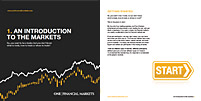

Gold prices in a holding pattern in anticipation of more rate cues
Investing.com-- Gold prices drifted slightly lower on Thursday, taking little support from a decline in the dollar and yields as markets remained on edge over the prospect of higher-for-longer U.S. interest rates.
But the yellow metal stuck largely within a trading range of $2,000 and $2,050 established over the past week, with traders now awaiting more cues on the path of interest rates.
Gold prices fell within a holding pattern after robust U.S. economic data and a chorus of hawkish Federal Reserve comments saw markets largely price out expectations for early interest rate cuts this year.
With the central bank now expected to begin trimming rates only from June 2024, the near-term outlook for gold remained cloudy. A spike in the dollar- to three-month highs- also pressured bullion prices, although the greenback saw a heavy dose of consolidation this week.
Spot gold fell 0.1% to $2,032.61 an ounce, while gold futures expiring in April fell 0.2% to $2,047.55 an ounce by 00:13 ET (05:13 GMT).
Higher interest rates diminish gold's appeal by increasing the opportunity cost of investing in the yellow metal.
Gold to remain rangebound, but downside limited by other factors- Goldman Sachs
Goldman Sachs analysts wrote in a recent note that while the prospect of later U.S. rate cuts presented some headwinds to bullion prices, any major losses in gold would be limited by a slew of factors.
Analysts expect physical demand for gold to remain high on consistent buying by central banks and steady demand in emerging markets.
Goldman Sachs analysts maintained their 12-month target price for spot gold at $2,175 an ounce.
Increased geopolitical uncertainty, especially after the rejection of a Israel-Hamas ceasefire this week, also pointed to higher safe-haven demand for gold in the near-term.
Copper prices near three-week low on negative China cues
Among industrial metals, copper prices rose slightly on Thursday but were pinned near three-week lows following more weak economic cues from top importer China.
Copper futures expiring in March rose 0.4% to $3.7523 a pound, but were just above their lowest levels since mid-January.
Consumer inflation data from China read weaker than expected for January, while producer inflation shrank for a sixteenth consecutive month. The consumer price index also fell at its worst pace since late-2009.
The data indicated that China’s economy was still struggling with deflation amid slowing growth, which in turn factored into concerns over a slowdown in Chinese copper demand.
Begin trading today! Create an account by completing our form
Privacy Notice
At One Financial Markets we are committed to safeguarding your privacy.
Please see our Privacy Policy for details about what information is collected from you and why it is collected. We do not sell your information or use it other than as described in the Policy.
Please note that it is in our legitimate business interest to send you certain marketing emails from time to time. However, if you would prefer not to receive these you can opt-out by ticking the box below.
Alternatively, you can use the unsubscribe link at the bottom of the Demo account confirmation email or any subsequent emails we send.
By completing the form and downloading the platform you agree with the use of your personal information as detailed in the Policy.






